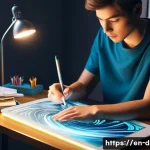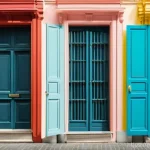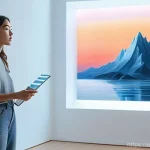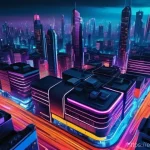Okay, here’s the blog introduction about Lightroom for digital art, following all the instructions:Have you ever gazed upon digital art and wondered how it achieves that polished, almost ethereal quality?
More often than not, the secret lies in mastering photo editing software, and Adobe Lightroom is a true powerhouse in this realm. I’ve personally spent countless hours experimenting with Lightroom’s tools, and it’s amazing how a few subtle adjustments can completely transform a piece.
From enhancing colors to playing with light and shadow, Lightroom offers a playground for artists to refine their creations. The latest trends show AI-powered features in Lightroom are making even complex edits more accessible, while the future promises even tighter integration with generative AI, blurring the lines between photography and digital painting.
It’s a skill that’s becoming increasingly valuable, especially as the demand for visually stunning content explodes across platforms. Let’s delve deeper in the following article and find out what Lightroom can really do!
Unlocking the Power of Color Grading for Digital Art
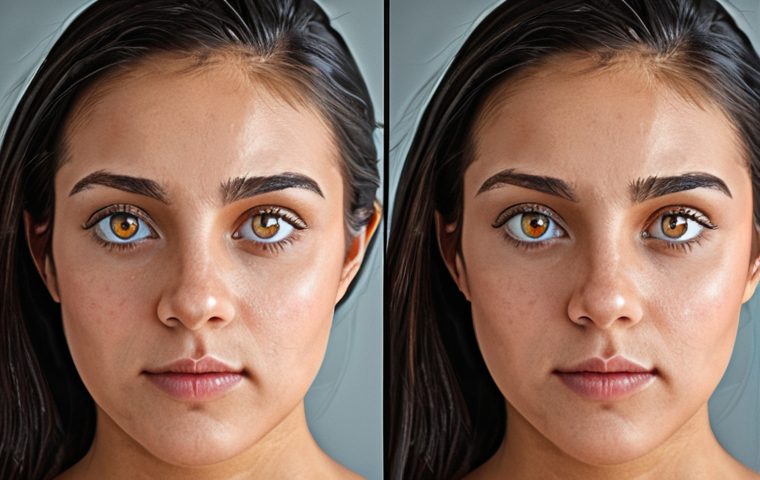
Color grading isn’t just about making images look pretty; it’s a fundamental tool for setting the mood, guiding the viewer’s eye, and enhancing the overall impact of your digital artwork.
I’ve seen firsthand how a simple shift in color balance can transform a drab illustration into a vibrant, eye-catching piece that demands attention. It’s about crafting a visual narrative, ensuring that the colors complement the subject matter and evoke the desired emotions.
Think about the warm, inviting tones often used in food photography versus the cool, stark hues favored in cyberpunk art. Lightroom provides the precise controls you need to achieve these effects, allowing you to fine-tune every aspect of your color palette.
Don’t underestimate the importance of color theory when approaching color grading, because understanding which colors work well together can make all the difference.
Many tutorials show a simple split complementary color grade will make your piece stand out and it only requires basic understanding of color.
Understanding Color Temperature and Tint
Color temperature, measured in Kelvin, dictates the warmth or coolness of your image. Adjusting this can dramatically alter the perceived mood. Warmer temperatures (lower Kelvin values) create a cozy, inviting feel, while cooler temperatures (higher Kelvin values) can evoke a sense of coldness or sterility.
The tint slider adjusts the balance between green and magenta, allowing you to correct color casts and achieve a more natural look. I’ve often found myself tweaking these settings to compensate for the color biases of different displays, ensuring that my art looks consistent across devices.
Mastering HSL (Hue, Saturation, Luminance) Sliders
The HSL panel in Lightroom offers granular control over individual color channels. Hue adjusts the specific color, saturation controls the intensity of the color, and luminance affects its brightness.
These sliders are invaluable for isolating and refining specific areas of your artwork. I remember working on a digital painting of a sunset where the orange hues felt a bit too muted.
By boosting the saturation and luminance of the orange channel, I was able to make the sunset pop without affecting the rest of the image.
Examples of HSL
- Changing a blue sky into a turquoise one by shifting the hue.
- Making a character’s red armor more vibrant by increasing saturation.
- Adding detail to a dark object by increasing the luminance of the darker colors.
Refining Details with Sharpening and Noise Reduction
Even the most meticulously crafted digital art can benefit from subtle enhancements to sharpness and noise levels. Sharpening can bring out fine details and textures, making your artwork appear more crisp and defined.
However, it’s crucial to avoid over-sharpening, which can introduce unwanted artifacts and make your image look unnatural. Noise reduction, on the other hand, helps to smooth out unwanted graininess, particularly in areas of shadow or low light.
I’ve found that a balanced approach, carefully adjusting both sharpening and noise reduction, is key to achieving a polished, professional look. As a bonus, mastering these features will help improve image quality if the final render will be printed.
The Art of Selective Sharpening
Lightroom’s sharpening tools offer precise control over the amount, radius, and detail of sharpening applied. Experiment with these settings to find the sweet spot for your artwork.
Consider using a brush to selectively sharpen specific areas, such as the eyes or focal point of your image, while leaving other areas untouched. This can help to draw the viewer’s attention to the most important elements of your composition.
I’ve personally used masking to sharpen the edges of objects on a flat illustration to give it a feeling of depth.
Taming Noise with Luminance and Color Noise Reduction
Noise can be particularly problematic in digital art created at high resolutions or with certain rendering techniques. Lightroom’s luminance noise reduction slider targets the overall graininess of the image, while the color noise reduction slider specifically addresses color artifacts.
Be careful not to overdo it with noise reduction, as this can soften your image and reduce detail. A subtle touch is usually all that’s needed.
Working with Local Adjustments for Targeted Edits
One of the most powerful features of Lightroom is its ability to make local adjustments, allowing you to target specific areas of your artwork without affecting the entire image.
Whether you want to brighten a character’s face, darken the background, or add a pop of color to a specific element, local adjustments give you the precision you need to achieve your artistic vision.
I’ve used local adjustments countless times to refine my digital paintings, and they’ve become an indispensable part of my workflow.
Using the Adjustment Brush for Precise Control
The adjustment brush is a versatile tool that allows you to “paint” adjustments onto your artwork. You can control the size, feather, and flow of the brush, as well as adjust a wide range of settings, including exposure, contrast, saturation, and sharpness.
This gives you incredible control over the look and feel of specific areas of your image. When I’m working on character art I usually use the adjustment brush to highlight facial features such as eyes, nose, and lips.
Leveraging Gradient and Radial Filters for Seamless Transitions
Gradient and radial filters offer a quick and easy way to apply adjustments to large areas of your artwork with smooth, natural transitions. Gradient filters are ideal for adjusting the sky or ground, while radial filters can be used to create vignettes or highlight a central subject.
Experiment with different filter shapes and sizes to achieve the desired effect. I tend to use radial filters for stylized lighting effects or to soften edges.
Transforming Mood with Tone Curve Adjustments
The Tone Curve is a powerful tool in Lightroom that lets you manipulate the brightness values in your image, influencing its overall mood and contrast.
By adjusting the curve, you can create dramatic changes in the highlights, shadows, and midtones, giving your digital art a distinct look and feel. Mastering the Tone Curve can truly elevate your work, enabling you to evoke specific emotions and guide the viewer’s eye.
I use this feature to create contrast and add a cinematic look.
Understanding the Basics of the Tone Curve
The Tone Curve is a graph representing the relationship between the original brightness values of your image (input) and the adjusted brightness values (output).
By manipulating the curve, you can remap these values, making specific tones brighter or darker. A simple S-curve, for example, increases contrast by darkening the shadows and brightening the highlights.
Creative Applications of the Tone Curve
Beyond basic adjustments, the Tone Curve can be used for more creative effects. Try creating a matte look by lifting the black point (the bottom-left corner of the curve) or adding a vintage feel by creating a faded look with a slight S-curve and reduced contrast.
The possibilities are endless.
- Darken highlights for a moody, dramatic look.
- Brighten shadows to reveal hidden details.
- Create a cross-processed effect by inverting the red, green, and blue channels.
Exporting for Maximum Impact
Once you’ve perfected your digital art in Lightroom, it’s crucial to export it in a way that preserves its quality and ensures it looks its best on different platforms.
The export settings you choose can significantly impact the final result, so it’s important to understand the various options available and select the ones that are most appropriate for your intended use.
I make sure to save my files in multiple formats so they are ready for any eventuality.
Choosing the Right File Format
The most common file formats for exporting digital art are JPEG, PNG, and TIFF. JPEG is a lossy format that compresses the image, reducing file size but potentially sacrificing some detail.
PNG is a lossless format that preserves all the original data, resulting in larger file sizes but higher quality. TIFF is another lossless format often used for archival purposes.
I typically use PNG for web display and TIFF for print.
Optimizing Resolution and Color Space
Resolution refers to the number of pixels in your image, and it directly affects its sharpness and detail. For web display, a resolution of 72 DPI (dots per inch) is usually sufficient, while for print, a resolution of 300 DPI is recommended.
Color space determines the range of colors that can be displayed in your image. sRGB is the standard color space for web, while Adobe RGB offers a wider range of colors and is often preferred for print.
Practical Use-Cases for Digital Art Refinement
Lightroom is not only useful for enhancing colors and fixing blemishes, but also for creating practical graphics that are required in everyday business settings.
Here’s a table listing the use-cases:
| Use-Case | Description | Lightroom Adjustments |
|---|---|---|
| Social Media Graphics | Creating eye-catching images for platforms like Instagram, Facebook, and Twitter. | Sharpening, color grading, adding vignettes, adjusting aspect ratios. |
| Website Banners | Designing visually appealing banners for websites to attract visitors. | Color balance, contrast adjustments, text overlay, resolution optimization. |
| E-commerce Product Photos | Enhancing product photos for online stores to improve sales. | Background removal, shadow adjustments, color correction, detail enhancement. |
| Digital Advertising | Creating attention-grabbing ads for online marketing campaigns. | Vibrant color grading, strategic cropping, text integration, dynamic effects. |
| Presentation Visuals | Improving slides and visuals for professional presentations. | Noise reduction, sharpening, consistent color schemes, infographic creation. |
Monetizing Your Digital Art Skills
The skills acquired through mastering Lightroom can be turned into tangible revenue streams. From freelancing as a photo editor to selling digital art assets, the possibilities are vast.
Freelancing as a Photo Editor
Platforms like Upwork and Fiverr are excellent places to find clients in need of photo editing services. Offering specialized services such as digital art enhancement can set you apart from general photo editors.
Creating and Selling Digital Art Assets
Design and sell digital art assets such as brushes, textures, and presets. These can be sold on marketplaces like Creative Market or your personal website.
Assets help to speed up other artists’ workflows and create unique styles in their art. Unleashing the full potential of your digital art involves a blend of technical skill and artistic vision.
Lightroom provides the tools; your creativity guides the process. Experiment, iterate, and don’t be afraid to push the boundaries. Every adjustment, every tweak, is a step towards mastering your craft and creating art that truly resonates.
I still consider myself a student of art and continue to make new discoveries everyday.
In Closing
Hopefully, this guide has shed some light on how Lightroom can significantly enhance your digital art. By understanding and applying these techniques, you can transform your creations from simple images into captivating works of art. Remember, the key is to experiment and find the techniques that best suit your style and vision. Have fun creating!
Good to Know Information
1. Keyboard shortcuts in Lightroom can dramatically speed up your workflow. For example, pressing ‘J’ toggles clipping warnings, showing you overexposed or underexposed areas.
2. Use virtual copies to experiment with different adjustments without altering your original image. Right-click on the image and select ‘Create Virtual Copy’.
3. Sync settings across multiple images to maintain consistency in a series of artworks. Select an image, adjust settings, and then use ‘Sync Settings’ to apply those adjustments to other selected images.
4. Consider purchasing or creating custom Lightroom presets to quickly apply a specific look or style to your art. These presets can save time and ensure a consistent aesthetic.
5. Back up your Lightroom catalog regularly to prevent data loss. Go to ‘Catalog Settings’ and set up a backup schedule.
Key Takeaways
– Color grading is essential for setting the mood and guiding the viewer’s eye.
– HSL sliders offer granular control over individual color channels.
– Selective sharpening enhances detail without introducing artifacts.
– Local adjustments allow targeted edits to specific areas of your artwork.
– The Tone Curve is a powerful tool for manipulating brightness values and creating a distinct look.
– Correct export settings is critical for preserving image quality.
– Mastering Lightroom can open doors to various monetization opportunities.
Frequently Asked Questions (FAQ) 📖
Q: I’m new to digital art. Is Lightroom really necessary, or can I just skip it?
A: Honestly, you could skip it, but you’d be missing out on a game-changer. I remember when I first started, I was hesitant to add another step to my workflow.
But once I took the plunge and started tweaking my art in Lightroom, the difference was night and day. It’s like adding that final layer of polish that makes your art really pop.
It’s especially helpful for consistency across different pieces and for achieving a specific aesthetic. Think of it like this: if you’re baking a cake, the initial design software is like mixing the batter, but Lightroom is the frosting that makes it look professionally done.
It’s an investment in making your art shine.
Q: I’ve heard Lightroom can be expensive.
A: re there cheaper or free alternatives that can do the same thing? A2: You’re right, the Adobe suite can be a bit pricey. I totally get looking for alternatives!
I’ve dabbled with a few myself. There are some decent free options like GIMP (though it has a steeper learning curve, in my opinion) and mobile apps like Snapseed which are great for quick edits on the go.
Affinity Photo is a paid option that’s generally cheaper than Lightroom and packs a punch. However, Lightroom’s integration with the Adobe ecosystem, its raw processing capabilities, and its powerful organizational tools are hard to beat.
Plus, they sometimes have deals, so keep an eye out. Think of it like this: you can buy a cheaper car, but if you’re serious about a long road trip, you might want the reliability and features of a more premium brand.
Q: I primarily create vector art in Illustrator. Does Lightroom even make sense for me?
A: That’s a great question! While Lightroom shines with raster images (photos, digital paintings), it can still be surprisingly useful for vector artists.
Here’s the thing: even if your core artwork is vector-based, you might want to add texture, gradients, or special effects that look best when rasterized.
I often export my Illustrator creations as high-res images and then bring them into Lightroom for final color grading and atmospheric adjustments. It can also be a lifesaver for preparing your art for print or for creating consistent thumbnails for your online portfolio.
I found that Lightroom helps giving them a more cohesive and professional feel.
📚 References
Wikipedia Encyclopedia
구글 검색 결과
구글 검색 결과
구글 검색 결과
구글 검색 결과
구글 검색 결과

